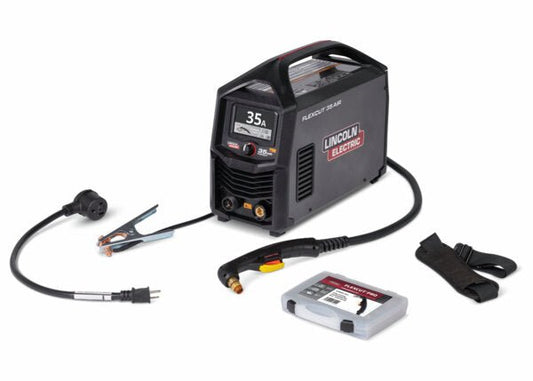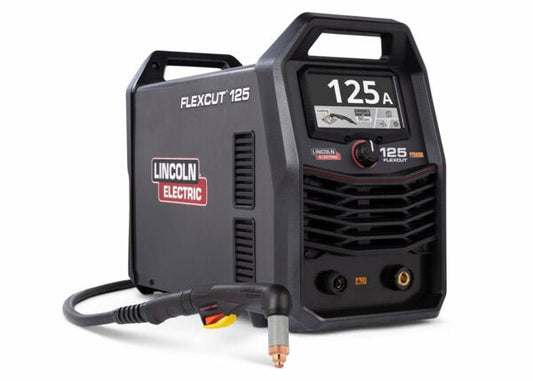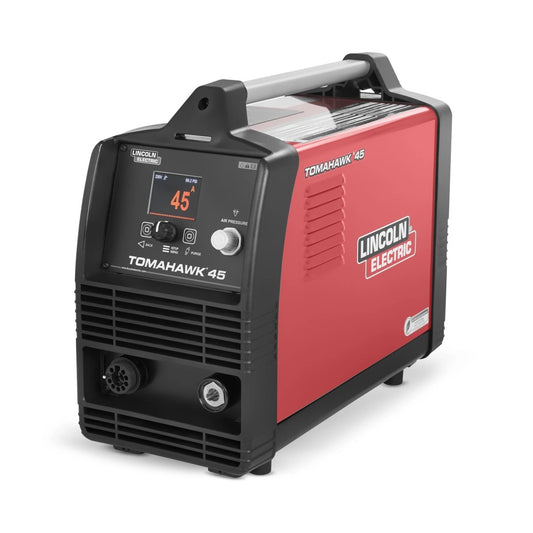Plasma Cutters
Plasma Torches
Plasma Consumables
What is Plasma Cutting
Plasma cutting is a process that uses a high-velocity jet of ionized gas (plasma) to cut through electrically conductive materials like steel, aluminum, and stainless steel with precision and speed. It delivers clean, efficient cuts by melting the material and blowing away molten metal using compressed air or gas, making it ideal for industrial fabrication and metalworking.
Automation Catalogue
FAQ's Plasma Cutting
What is plasma cutting and how does it work?
Plasma cutting is a process that uses a high-velocity jet of ionized gas (plasma) to cut through electrically conductive materials like steel, stainless steel, and aluminum. The plasma arc is generated by sending an electrical current through a gas such as compressed air, nitrogen, or oxygen, creating extreme heat that melts the metal while a high-speed stream of gas blows away the molten material.
What materials can be cut using a plasma cutter?
Plasma cutters are ideal for cutting electrically conductive metals such as mild steel, stainless steel, aluminum, brass, and copper. They are commonly used in fabrication, automotive repair, shipbuilding, and industrial manufacturing due to their ability to make precise, clean cuts on thick and thin metals alike.
What are the advantages of plasma cutting over oxy-fuel cutting?
Plasma cutting offers faster cutting speeds, cleaner edges, and the ability to cut through non-ferrous metals like stainless steel and aluminum, which oxy-fuel cannot cut efficiently. Unlike oxy-fuel, plasma cutters do not require preheating, making them more efficient for high-production environments.
What type of gas is needed for plasma cutting?
The choice of gas depends on the application, but common options include compressed air, nitrogen, oxygen, and argon-hydrogen mixtures. Compressed air is the most widely used due to its affordability and versatility, while oxygen is preferred for cutting mild steel as it enhances cutting speed and edge quality.
How do I extend the lifespan of my plasma cutting consumables?
To maximize the life of your plasma torch consumables, maintain proper air pressure, use high-quality electrodes and nozzles, and avoid excessive pilot arc time. Regularly inspecting and replacing worn consumables ensures clean cuts and prevents torch damage, reducing downtime and operational costs.
Featured Products
What is Plasma Cutting
Plasma cutting is a process that uses a high-velocity jet of ionized gas (plasma) to cut through electrically conductive materials such as steel, stainless steel, aluminum, brass, and copper. This method is widely used in metal fabrication, automotive repair, industrial construction, and welding applications due to its precision, speed, and ability to cut a variety of thicknesses.
How Plasma Cutting Works
- Ionization of Gas – A plasma cutter uses compressed air or other gases like oxygen, nitrogen, or argon. When the gas passes through an electrical arc, it becomes ionized, creating a plasma state.
- High-Temperature Cutting – The ionized gas reaches temperatures of up to 30,000°F, melting the metal on contact.
- Precision Cutting – A constricted nozzle focuses the plasma arc, enabling precise and clean cuts with minimal heat distortion.
- Blown-Away Molten Metal – The high-speed plasma jet blows away the molten metal, leaving a sharp and smooth edge.
Advantages of Plasma Cutting
- Fast Cutting Speeds – Much quicker than oxy-fuel cutting, reducing work time.
- Versatility – Cuts various metals, including painted or rusted surfaces.
- Precision and Clean Cuts – Minimal slag, reducing post-cut cleanup.
- Cost-Effective – Lower operating costs compared to other cutting methods.
Plasma Cutting Applications
Plasma cutting is essential in industries like:
- Metal fabrication – For creating custom parts.
- Automotive – Cutting and repairing metal components.
- Construction – Steel framework and infrastructure.
- Welding and repair shops – Quick modifications and repairs.





















